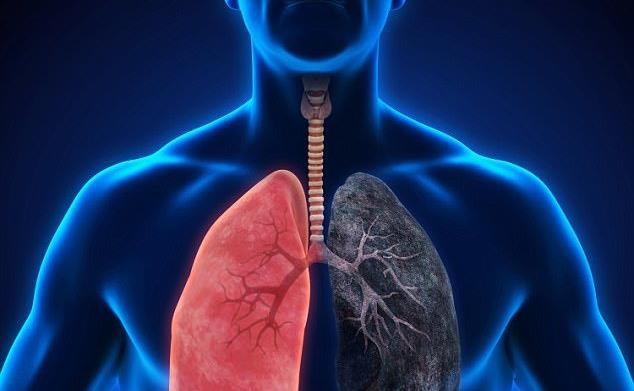
Lung cancer is one of the most common types of cancer that begins in the lungs and may spread to lymph nodes or other organs in the body.
Lungs cancer are grouped into two types:
1. Small cell
2. Non-small cell
Non-small cell lung cancer is more common than the small cell.
Small cell lung cancer grows quickly and in more than half of cases, cancer has spread beyond the lung by the time the condition is diagnosed.
Non-small cell lung cancer is divided into three main subtypes:
1. Adenocarcinoma
2. squamous cell carcinoma
3. large cell lung carcinoma
Lung cancer risk factors
:Some factors raise the risk of getting it:
-
Smoking
-
Air pollution
-
HIV infection
-
Certain imaging tests such as CT scans
-
Being exposed to radiation
-
Being exposed to asbestos, arsenic, and chromium in the workplace
-
Family history of lung cancer
Lung cancer Symptoms
Symptoms of non-small cell lung cancer and small cell lung cancer are the same. Lung cancer may not cause signs or symptoms in its early stages. People with lung cancer may experience the following symptoms:
-
Chest pain that worsens when patient breathe deeply or cough
-
Blood in the mucus
-
Shortness of breath
-
Loss of appetite and weight loss
-
Fatigue
-
Frequent coughing
-
Hoarseness
As cancer spreads, additional symptoms depend on where new tumors form.
Lung cancer Diagnosis
People with an increased risk of lung cancer may consider annual lung cancer screening using low-dose CT scans. Lung cancer screening is generally offered to people 55 and older who smoked heavily for many years or who have quit in the past 15 years.
After a physical examination, the doctor will do imaging tests such as chest x-ray, do lab tests including tests of blood and may do a biopsy of the lung.
If the patient does have lung cancer, the doctor will do other tests to find out how far it has spread through the lungs, lymph nodes, and the rest of the body.
Lung cancer Treatment
The treatment depends on the type of lung cancer, how far it has spread, the patient’s age, gender, and general health
The treatments for small cell lung cancer:
Six types of standard treatment are used:
-
Surgery
-
Chemotherapy
-
Radiation therapy
-
Immunotherapy
-
Laser therapy
-
Endoscopic stent placement
The treatments for Non-small cell lung cancer:
Ten types of standard treatment are used:
-
Surgery (wedge resection, Lobectomy, Pneumonectomy, Sleeve resection)
-
Radiation therapy
-
Chemotherapy
-
Targeted therapy
-
Immunotherapy
-
Laser therapy
-
Photodynamic therapy: It is a cancer treatment that uses a drug and a certain type of laser light to kill cancer cells
-
Cryosurgery
-
Electrocautery
-
Watchful waiting: It is closely monitoring a patient’s condition without giving any treatment until signs or symptoms appear or change
Diet Therapy in Lung cancer
Certain dietary patterns have emerged as being protective against lung cancer:
ü Replacing red meat with legumes
ü Consumption of fruits and vegetables: Fruits and vegetables offer the body antioxidants, which can help fight against cancer.
ü Limiting alcohol intake
ü Maintaining adequate vitamin D status
Each person's nutritional needs during lung cancer are different. They are based on current height and weight, any other illness, and cancer treatment plan.
Some nutritional points include:
ü Maintain a healthy weight
ü Get essential nutrients the body needs
ü Avoid foods that make lung cancer treatment side effects worse
ü Eating enough protein (fish, poultry, lean red meat, eggs, whole milk, yogurt, cheese, nuts and nut kinds of butter, beans, peas, lentils, soy foods, and gelatin)
ü Managing loss of appetite
ü Staying hydrated to recover from side effects and to flush out any harmful by-products of medications
ü Stay away from drinks that contain caffeine
If patients feel sensitive to food odors, try eating foods that are cold or at room temperature. Foods served hot often have a strong smell. They can also choose foods that do not need to be cooked, such as cold sandwiches, crackers and cheese, yogurt and fruit, and cold cereal and milk.
Patients can mask the metallic taste by marinating the meat in orange juice, lemon juice, and soy sauce.




